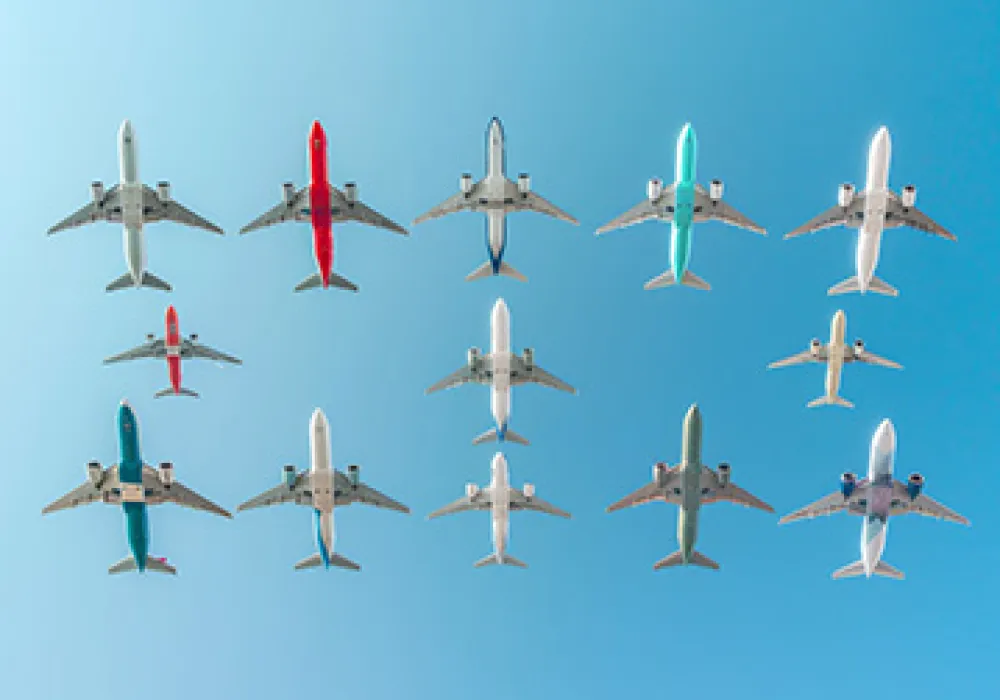Introduction:
Flying an aircraft is not just a career; it's a passion and a way of life. At Wing Path Aviation Academy, we open the door to the skies with our comprehensive Commercial Pilot License (CPL) training programs. As a CPL holder, you’ll have the skills to operate various aircraft types, whether you're soaring in a single-engine plane or navigating the complexities of a dual-engine craft.
Before joining an aviation academy it's important to know about the types of aircraft you can command with a CPL.
Single-Engine Aircraft
Cessna 172:
The Cessna 172 Skyhawk stands out as the most popular and enduring single-engine aircraft ever built. Since its first flight in 1955, this high-wing, four-seat marvel has become a cornerstone in flight training. The Cessna 172’s reliable performance and flight characteristics make it a favourite among student pilots and seasoned aviators alike.
Diamond DA40 Diamond Star:
The Diamond DA40 Diamond Star is a sleek, composite-built aircraft that combines modern technology with amazing flight performance. With a powerful 180 HP Lycoming engine and advanced avionics & aerodynamics, the DA40 offers a smooth and efficient flying experience. Its impressive cruise speed and fuel efficiency make it a top choice for both training and personal flying.
Piper PA-46:
The Piper PA-46 series, known for its luxurious design and extended range, is another fantastic aircraft for CPL holders. From the piston-engined M350 to the turboprop M500 and M600, these six-seat aircraft offer a combination of comfort and performance. Training in the PA-46 allows you to get a taste of its superior handling and advanced systems.
Dual-Engine Aircraft
Piper PA-34 Seneca:
The Piper PA-34 Seneca is a twin-engine light aircraft widely used for personal and business flying. Known for its stability and reliability, the Seneca is an excellent choice for pilots looking to advance their skills in dual-engine operations. Training in the Seneca ensures you are well-versed in handling twin-engine dynamics and complexities.
Diamond DA42 Twin Star:
The Diamond DA42 Twin Star is a revolutionary twin-engine aircraft that shines in the sky with its advanced safety features and impressive fuel efficiency. Constructed from carbon fibre, the DA42 is robust and an aerodynamic marvel. Its innovative design and diesel-powered engines make it a standout in the world of aviation.
Beechcraft Baron:
The Beechcraft Baron is a legendary aircraft known for its performance and reliability. With a history dating back to 1961, the Baron remains a favourite among pilots for its design and powerful engines. Training in the Baron offers the chance to fly an aircraft that has stood the test of time.
What Aircraft Can You Fly After CPL?
With a CPL and Type Rating endorsement, you will be eligible to pilot multi-crew airliners like the Airbus A320 or Boeing 737. However, even with a Commercial Pilot Licence and an ATPL theoretical certificate, you can only command a multi-crew aircraft after logging 1500 flight hours or as stipulated by the airline's policies.
The pinnacle of pilot certification is the Airline Transport Pilot Licence (ATPL). To captain an airliner, a pilot must hold an ATPL. A CPL can be upgraded to an ATPL once a pilot has accumulated the necessary 1500 flight hours (or the specific number of hours required by the airline) and completes the ATPL practical test, on the condition that they have already passed the ATPL theory exam.
Navigating Your Aviation Career
A CPL opens up a world of possibilities in aviation. Whether you aspire to be a flight instructor, air taxi pilot, or charter pilot, the type of aircraft you fly will depend on your specific career path. Flight instructors often train in single-engine or twin-engine aircraft like the Cessna 172 or Diamond DA42. On the other hand, air taxi and charter pilots might find themselves in aircraft like the Piper PA-34 Seneca or the Beechcraft Baron, capable of handling more demanding flight conditions and passenger loads.
Conclusion
Embark on your aviation journey with the knowledge and skills to confidently operate a range of aircraft. Whether you're drawn by the simplicity of single-engine planes or the complexity of dual-engine marvels, mastering these aircraft is the first step toward a rewarding and adventurous career in the skies.








